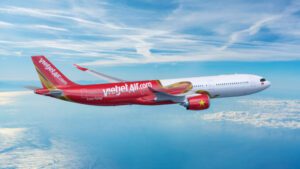“We are taking practical steps towards achieving that ambition,” she said, announcing the airline’s 2030 Emissions Guidance. “Having a comprehensive and annually updated outlook of our emissions trajectory to 2030, and a clear understanding of how we can get there, is a critical stepping stone.”
Long considered an advocate of sustainable aviation, Air New Zealand had committed that by 2030 it would reduce its carbon intensity by 28.9% compared to 2019, equivalent to a 16.3% cut in absolute emissions over that term – a position which was validated by the Science Based Targets initiative (SBTi).
But last year the airline controversially ditched its 2030 target and withdrew from the SBTi, conceding that widespread external uncertainty was compromising its decarbonisation efforts and necessitating extended use of older, less efficient aircraft.
Among the elements which led to its decision were failures of, or delays to, next-generation aircraft and propulsion programmes, several of which the airline was considering as part of its decarbonisation strategy.
As a result, it decided to extend beyond 2030 the use of its ageing fleet of 23 De Havilland Canada Q300 turboprops, when it had hoped to start replacing them with next-generation aircraft or retrofitting new low-or-no emission powertrains.
The updates of the airline’s expected net emissions by 2030 will be based on detailed ongoing modelling of the carrier’s progress towards decarbonisation, plus external market conditions including government policy developments.
Hannifin said the airline’s new approach would provide “high levels of transparency in a rapidly evolving environment,” which were heavily impacted by factors outside the airline’s control.
“Rather than setting an emissions target that remains static, regular emissions guidance will give our investors and customers an up to date and clear view of our expected emissions trajectory, including the impact from external risks and opportunities,” she explained.
“The reality of decarbonising an industry like aviation is there is uncertainty and are many factors we have limited control over, such as the availability of sustainable aviation fuel at reasonable prices. Many of our assumptions are evolving rapidly.
“We hope there may be opportunities to move faster as new technologies and the SAF industry grow, so our 2030 emissions guidance could be updated to reflect any upside as well.”
The airline’s 2024 Climate Statement, which was updated after the carrier’s withdrawal from SBTi, details its overarching strategy to achieve net zero carbon emissions by 2050.
It ranks the use of biogenic and synthetic SAF as the primary pathway to net zero by 2050, accounting for an estimated 35-45% of its expected emissions reductions.
Fleet and network optimisation are expected to cut emissions by a further 20-30%, next generation aircraft by 10-15%, carbon credits and removals by 10-30% and operational and fuel efficiencies by 1-2%
The airline has identified 11 material climate related risks, headed by “acute and severe weather events” and “chronic climate change”, which it defines as any longer-term shifts in core patterns including average temperatures, rainfall and rising sea levels.
It also highlights fleet renewal, SAF use, and carbon credits and removals as key drivers of change, adding that all face significant risks.
“Some actions necessary to enable the airline to achieve the 2050 target are within the control of the airline,” says the report, “but most rely on third parties and governments to take material actions within assumed time frames.”
Securing SAF at “commercial prices” is a central element of the transition plan, but is heavily reliant on external developments in production, technology, certification, costs and policy support, the airline said, revealing that SAF represented just 0.4% of Air New Zealand’s 2024 fuel use, with supplies uplifted in New Zealand, Singapore and the US.
“Lack of new policy support in New Zealand and the Asia-Pacific region, or potential removal of existing support in North America, could result in supply shortfalls or sustained high costs to meet the airline’s targets,” says the report.
Without SAF technology improvements and production increases, the airline’s ability to access sufficient volumes could be jeopardised, “potentially resulting in Air New Zealand missing its emission reduction targets as well as suffering reputational damage and increased compliance costs.”
The report also underscores the importance of upgrading conventional aircraft fleets and transitioning to next generation aircraft and engines if net zero targets were to be met, but warned of significant delays.
“In the short term (0-5 years), the aviation sector generally and Air New Zealand are experiencing severe supply constraints of both aircraft and engines, limiting the airline’s options for conventional fleet renewal,” it says.
“Continued constraints to conventional fleet renewal are expected to remain material in the medium term (5-18 years) and could be exacerbated if conventional fleet and equipment manufacturers experience further production slowdowns.”
It adds: “While next generation aircraft will not be commercially viable in the short term, Air New Zealand expects them to play a role in achieving the 2050 target. However, significant progress on several factors by parties external to the airline is required for this to be viable.”
Photo: Air New Zealand Q300 turboprop aircraft





